Sarah walked up to one of the residences. A housewife came to the door, and she and Sarah were exchanging a few words when suddenly they were interrupted by a loud cracking noise. Sarah spun round to see that two men had appeared. One of them held a machine gun; the other had a rifle. They were standing in a nimbus of smoke, crouched, with their backs to Sarah, spraying bullets from close range into the driver’s side of the laundry van, where Ted was sitting. Sarah stood frozen in the doorway, watching helplessly as Ted was killed. Then one of the gunmen turned in her direction.
After the debacle of the internment raids, the British Army and the Special Branch of the Royal Ulster Constabulary had continued to focus, with ever greater intensity, on cultivating sources within both loyalist and republican paramilitary groups. Brendan Hughes started to develop a suspicion, in 1972, that he might have an informant in D Company. His intelligence officer told him that a young volunteer, a former asphalt layer named Seamus Wright, had been arrested earlier in the year – and that ever since his arrest, he would go missing from time to time.
Wright, who was twenty-five, had recently married, and Hughes paid a visit to his wife, Kathleen. She said that Seamus had been arrested in February and held by the British, but then he had telephoned a shop near her home and left a message for her, saying that he had ‘scarpered’ – run away. Seamus was in England now, Kathleen continued. He was in Birmingham; she had an address. Hughes suggested that perhaps Kathleen should go there and see Seamus. He was enlisting the young bride of a suspected spy to serve as a spy herself: she would pay Seamus a visit and try to get him to return with her. Then she would report back to Brendan Hughes.
Kathleen flew to England. But when she got there, Seamus refused to come home. So she returned alone and met Hughes at a house on Leeson Street. During this debriefing, Kathleen confirmed his worst fears. Seamus had been turned by the British, she said. When she saw her husband, he had been accompanied by an Englishman – some sort of handler. But there was a catch, she continued: Seamus wanted out. He planned to flee, to escape his handlers. But he wanted a guarantee that if he came back to Belfast, he wouldn’t be shot by the IRA. This was a bold proposal from someone who had violated the trust of the Provos and gone into business with the enemy, a transgression that was generally punishable by death. But sensing an opportunity to learn how the British were going about their recruitment of double agents, Hughes consented, and gave the guarantee.
Not long afterwards, Seamus Wright returned to West Belfast, where he was interrogated in a house for two days. He explained that during his initial arrest by the British, they had told him that they could link him to an explosion that had killed a member of the security forces. They were so adamant that they had the goods on him that Seamus began to suspect he had been grassed – given up to the authorities by a ‘supergrass’, a paid informer. Once his handlers had secured his cooperation, they asked him about guns and explosives. But what they really wanted to know about was the Dirty Dozen. They told Seamus that if he would just give them the names of everyone in D Company, he would not be charged with any crime.
Hughes was dismayed to discover that he had a traitor in his company – a traitor who had revealed the identities of the Dirty Dozen. One irony of the Provos’ pretence to being a legitimate army was that in those early days, they were structured much like the British Army, with battalions and companies and a clear, legible chain of command. What this meant, in practice, was that if the enemy succeeded in turning someone – even a relatively junior player like Seamus Wright – they could discern the org chart of a large swathe of the organisation.
After agreeing to be an informant, Wright said, he was flown to England, for training as a double agent. Then he was flown back to Northern Ireland, with the understanding that he would now begin to gather intelligence on the Provos. As Hughes listened intently, Wright described a secret compound at Palace Barracks, where the army housed its prized informants. There was a clandestine unit inside the army, Wright said – they called it the MRF, and it managed both republican and loyalist informants. Wright explained that the army controlled a stable of individuals who had been induced to switch sides and were now working undercover for the British. Members of the MRF would show them newsreel footage of funerals and surveillance pictures of suspects, then ask them to pick out the people they knew. Sometimes Wright’s handlers would load him into an armoured personnel carrier and drive into the Falls. As they prowled through the narrow streets, Wright would peek through the vehicle’s gun slits and identify the pedestrians they passed.
The MRF had a name for this secret coterie of traitors. They called them the ‘Freds’. Nobody in the Provos ever learned the source of the nickname, but there was no way to read the work of Brigadier Frank Kitson and not recognise that the Freds were a counter-gang. Now the eye slits in those white hoods that Kitson’s Mau Mau informants wore back in Kenya had been replaced by the gun slits in a Saracen armoured vehicle. Wright said that the compound where the Freds were kept was segregated, so he could not identify most of the other informants. But there was one he could name. ‘There is a guy I have seen in there,’ Wright said. ‘He is one of us.’
The man Wright named was a young Provo, a boy, really, a member of Ballymurphy company named Kevin McKee. He was still a teenager, a handsome adolescent with big blue eyes, shaggy dark hair and a slight overbite. People called him ‘Beaky’. He had grown up in West Belfast and liked to sit in the front room of the family home, listening to records on the old-fashioned radiogram. He joined the youth wing of the IRA, throwing stones at the British Army and the RUC. When loyalists would string a Union Jack on a telephone pole, Kevin would shimmy up and pull it down, to cheers from the people below. He was a charismatic kid, caught up in the romance and intrigue of the Troubles. There was an innocence to him. But he also went on ‘snipes’ (as sniping operations were known) and planted bombs. As one of his IRA contemporaries in Ballymurphy put it, ‘He didn’t lack balls.’
One night, Kevin McKee was arrested and hauled into Springfield Road army barracks. Two of his aunts ventured to the barracks to see what had happened to him, but when they arrived, they were told that he had escaped. Eventually the family received letters from Kevin in England, and assumed that he must have moved there to hide from the army and the police.
But the truth was, he had become an informant. A British Army log from the night when he was arrested noted that after being taken into custody, he ‘gave information’ about a particular property. The log then listed a series of weapons that were recovered from an IRA arms dump at that address. According to the log, McKee was arrested just before 11 p.m., and the house was searched just after midnight. So he must have flipped almost immediately. Seamus Wright told Hughes that McKee ‘loved’ his involvement in the Freds. And the members of the military units in the MRF took a shine to the cocksure teenager. They liked his bravado.
When Frank Kitson was recruiting captured Mau Mau in Kenya to work in counter-gangs, he found that they needed to be ‘tamed’, in a process he described as if it were the breaking of a horse. He avoided fanatical believers, who were too difficult to bring across to the other side, and focused instead on recruiting people who had joined the movement for a reason that was essentially social: because their friends were joining. In one of his books, Kitson noted that the very best recruits were the ones with ‘a spirit of adventure’, people who ‘thought that it would be fun to be a gangster and carry a pistol’. They were ‘the easiest to handle because they were the easiest to satisfy’. In Kenya, these were the types of recruits to whom Kitson would give his own gun, letting them carry it on patrol to indulge their sense of adventure and make them feel like a trusted part of the team. In Belfast, the MRF gave Kevin McKee a pistol and a shoulder holster, which he wore around, flaunting the costume as if he were a Chicago gangster. As a Fred, he was entitled to carry the weapon and make use of the firing ranges on the army base.
Читать дальше
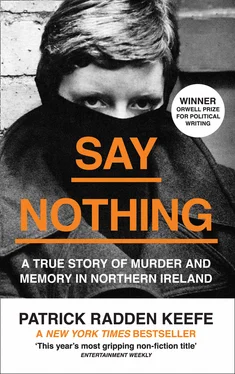
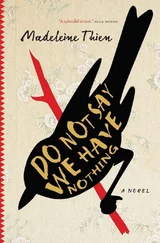
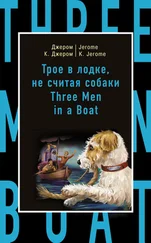

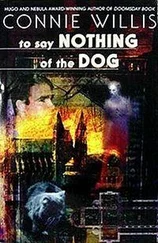
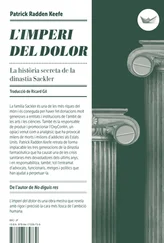






![Helen Rowland - The Widow [To Say Nothing of the Man]](/books/752764/helen-rowland-the-widow-to-say-nothing-of-the-man-thumb.webp)